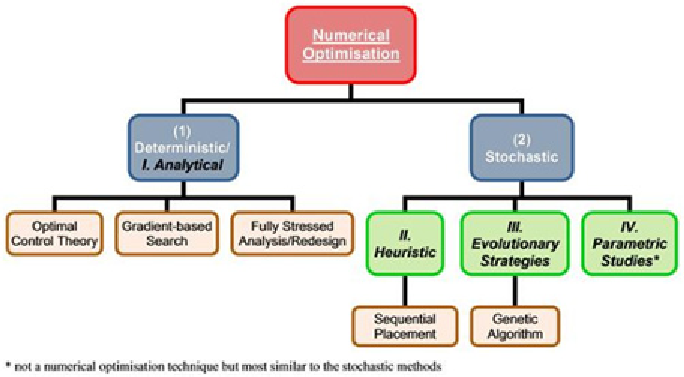Geology Reference
In-Depth Information
INTRODUCTION
time history analysis, a suite of twenty ground
motions, and two seismic hazard levels (DBE and
MCE), the effectiveness of the optimal damper
placement schemes is gauged by the reduction in
peak interstory drifts, total accelerations, residual
drifts, and overall ability to meet the expected
performance objective.
The addition of supplemental damping to build-
ings is becoming an increasingly popular seismic
design strategy, and with it has come the evolution
of building guidelines to include supplementally
damped structures. A critical design concern is
the placement of dampers, as the distribution of
damping may greatly affect a building's dynamic
response and the resulting damping cost (Soong
and Dargush, 1997). However, despite the variety
of optimal damper placement methods available,
there is no clear consensus on which method is
best. Building codes say little on the issue, and
few thorough comparisons of damper placement
techniques have been conducted for realistic
building scenarios.
The purpose of this chapter is to present some
of the most notable efforts in optimal damper
placement, and to explore the potential of a sub-
set of these for improving building performance.
After a general review of available methods, we
present a comparison of three optimal placement
techniques with two simpler, standard techniques.
To do this, the five damper placement techniques
are applied to a supplementally damped steel mo-
ment resisting frame building. Using nonlinear
REVIEW OF DAMPER
PLACEMENT TECHNIQUES
A large variety and quantity of damper place-
ment methods have been proposed; these can be
categorised, as shown in Figure 1.
Stochastic Methods
Heuristic approaches are particularly applicable
to structural engineering problems because they
allow for problem-specific a priori knowledge (Liu
et al., 2005). The adaptation of the controllabil-
ity index, previously used to determine optimal
actuator locations for active structural control
(Cheng and Pantelides, 1988), to sequentially
place dampers where their effects are maximised
(Zhang and Soong, 1992) was an innovative
Figure 1. Classification of optimised damper placement approaches (adapted from Liu et al., 2005)

Search WWH ::

Custom Search